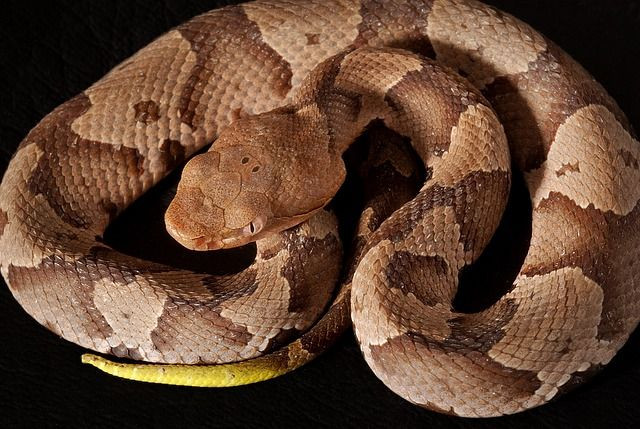Copperhead Snake Curled Up Near Thanksgiving Decorations Bites South Carolina Woman
A woman who was bitten by a venomous snake at her home in Florence, South Carolina, last weekend, is now recovering.
Ashlee Harrell was taking down her Thanksgiving decorations in the yard when she felt an excruciating pain in her leg. She soon realized that she was bitten by a Copperhead snake.
"I was actually getting my decorations down. Transferring things from Thanksgiving to Christmas. Had moved one pumpkin successfully. I went to grab the second one and I felt this horrible pain. Looked down and there was a baby Copperhead curled up that was about to strike me again. My toe was already bleeding. So I knew he had already gotten me," she told ABC-affiliated television station WPDE.
She immediately began screaming for help. Her neighbor rushed to her home and called the paramedics. Harrell was taken to a local hospital where she was administered an anti-venom. She was discharged from the hospital the following day and was recovering at her home. The reptile was killed by the neighbor.
Harrell told the channel that this wasn’t the first time she was bitten by a deadly snake. In 2012, she was hospitalized for 41 days after being bitten by a water moccasin, which is North America's only venomous water snake.
Warning people to be alert especially while doing any yard work, Harrell told WPDE, "I hunt I fish. I am used to snakes and critters. This year they are extremely bad. So the people that leave their shoes outside the house and stuff, you might want to check inside your shoes. The leaves falling. The snake blended in perfectly. It was perfectly camouflaged."
Speaking to the channel about how patients with snake bites are treated, McLeod Regional Medical Center said, "The staff first evaluates the snake bite to check for swelling. If swelling occurs, depending on the severity of the swelling and the type of snakebite they would administer vial(s) of anti-venom and continue to observe the patient for a reaction to the anti-venom and to monitor the symptoms."
"In severe cases, this may result in surgical intervention or the patient being observed in an intensive care unit. He said most often what they see here are dry bites meaning there are bite marks but no venom was released. For dry bites, they make sure the patient's tetanus shot is up to date and may start them on antibiotics. They also observe the patient for 6 to 8 hours in case there is a delayed reaction to the bite -- it can take that long for symptoms to develop after the bite," the medical center added.






















